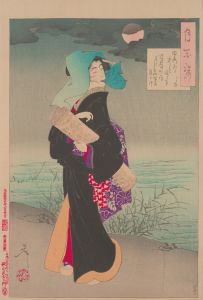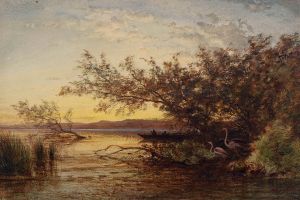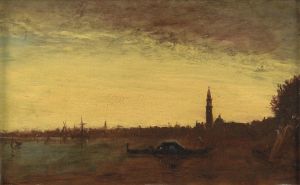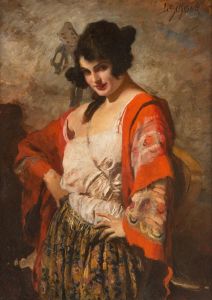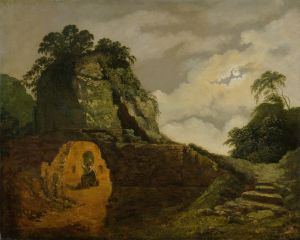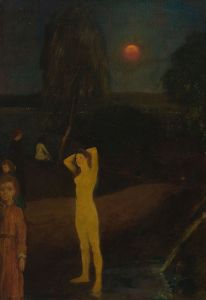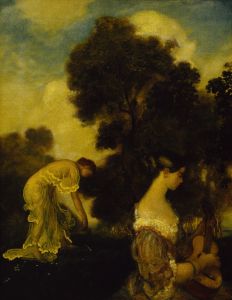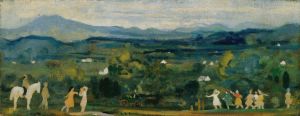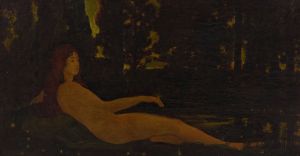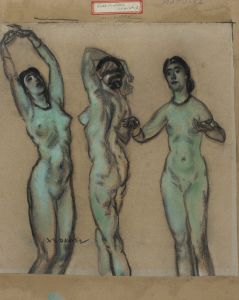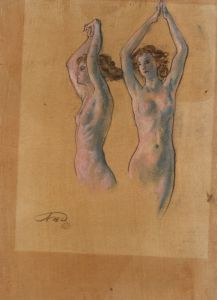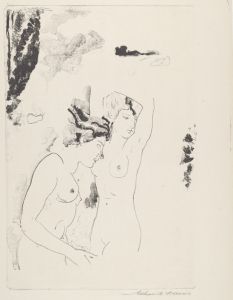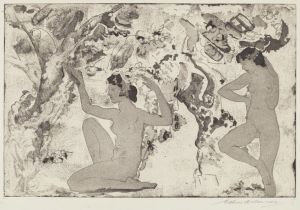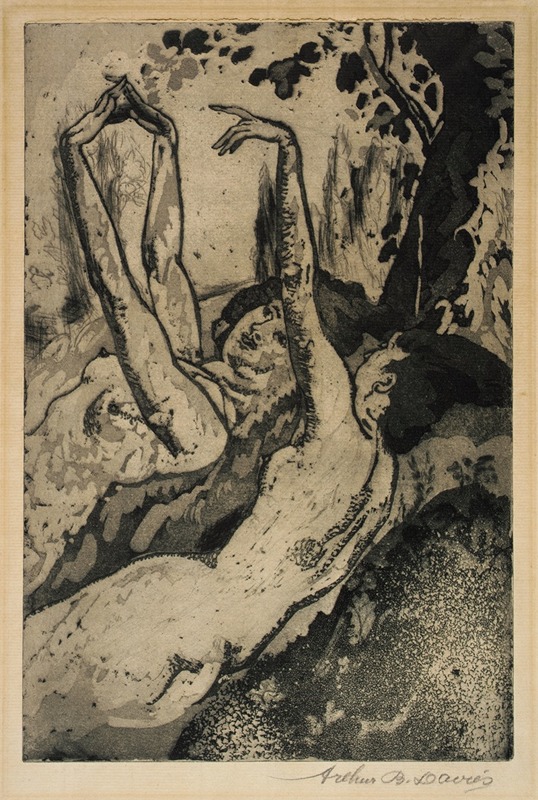
Moonlight on the Grassy Bank
A hand-painted replica of Arthur Bowen Davies’s masterpiece Moonlight on the Grassy Bank, meticulously crafted by professional artists to capture the true essence of the original. Each piece is created with museum-quality canvas and rare mineral pigments, carefully painted by experienced artists with delicate brushstrokes and rich, layered colors to perfectly recreate the texture of the original artwork. Unlike machine-printed reproductions, this hand-painted version brings the painting to life, infused with the artist’s emotions and skill in every stroke. Whether for personal collection or home decoration, it instantly elevates the artistic atmosphere of any space.
Arthur Bowen Davies was an American artist known for his contributions to the American modernist movement. Born in 1862 in Utica, New York, Davies played a significant role in the early 20th-century art scene, particularly as a member of The Eight, a group of artists who challenged the academic norms of their time. His work often combined elements of symbolism and romanticism, characterized by dreamlike and ethereal qualities.
"Moonlight on the Grassy Bank" is one of Davies' notable paintings, although specific details about this particular work are limited in public records. Davies' oeuvre often depicted idyllic landscapes and allegorical scenes, frequently featuring figures in harmonious natural settings. His style was influenced by both European symbolism and the American landscape tradition, blending these elements to create a unique visual language.
Davies' work is often described as lyrical and poetic, with a focus on mood and atmosphere rather than detailed realism. This approach is evident in many of his paintings, where he used soft, muted colors and fluid forms to evoke a sense of tranquility and mystery. His interest in the spiritual and the mystical is a recurring theme, reflecting his fascination with the transcendental aspects of nature and human experience.
Throughout his career, Davies was associated with various art movements and exhibitions that shaped the course of American art. He was a key figure in organizing the 1913 Armory Show, a landmark exhibition that introduced American audiences to European avant-garde art. This event was crucial in shifting the American art scene towards modernism, and Davies' involvement underscored his commitment to innovation and artistic freedom.
Despite his contributions to modern art, Davies maintained a personal style that was distinct from the more radical approaches of some of his contemporaries. His work often balanced traditional and modern elements, appealing to a broad audience while still engaging with contemporary artistic dialogues.
Davies' paintings, including "Moonlight on the Grassy Bank," are housed in various public and private collections, reflecting his enduring influence and the appreciation for his artistic vision. His ability to capture the serene beauty of the natural world, combined with his interest in the mystical, continues to resonate with viewers and art historians alike.
While specific information about "Moonlight on the Grassy Bank" is scarce, it can be inferred that the painting embodies the characteristics typical of Davies' work: a serene landscape bathed in soft light, possibly featuring figures that blend harmoniously with their surroundings. This piece, like many of his others, likely invites viewers to contemplate the quiet beauty and spiritual depth of the natural world.
Arthur Bowen Davies passed away in 1928, leaving behind a legacy that has been celebrated for its contribution to the development of American modernism. His work remains an important part of the narrative of early 20th-century art, bridging the gap between traditional landscape painting and the emerging modernist sensibilities of his time.





